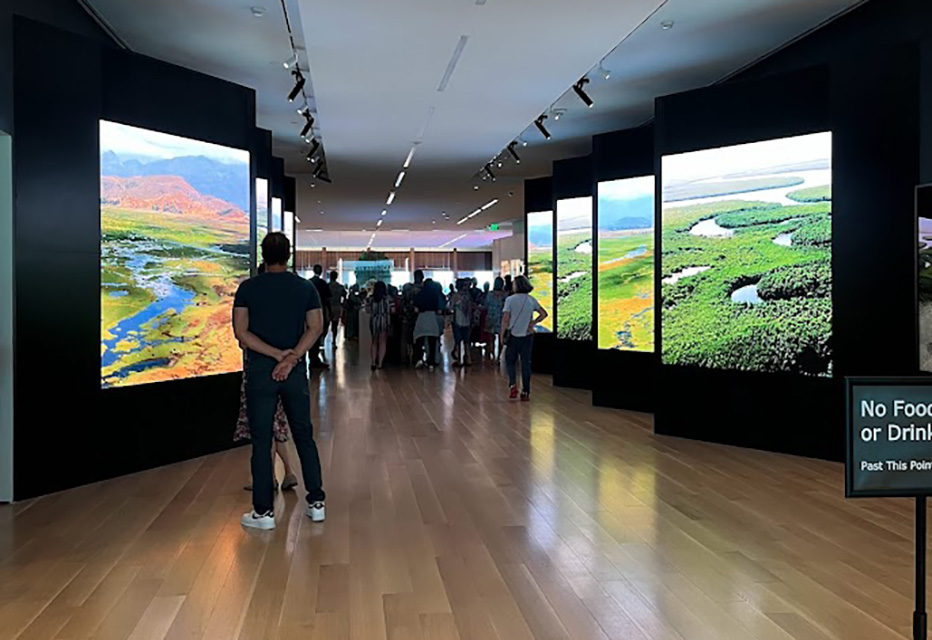The International African American Museum in Charleston, SC, is using Sony display technology.
The recently inaugurated International African American Museum (IAAM) in Charleston, South Carolina, stands as a poignant tribute to the often overlooked and challenging narratives of the African American odyssey. It is situated at the historically significant Gadsden’s Wharf, which was once a thriving international slave trading port. The IAAM has harnessed the power of advanced Sony technology, along with other cutting-edge tools, to seamlessly blend history and storytelling, fostering heightened engagement, communication, and education.
The invaluable support from Sony’s Global Social Justice Fund, dedicated to championing social justice and anti-racist endeavors while promoting diversity, equity, and inclusion worldwide, has allowed the museum to seamlessly integrate Sony’s state-of-the-art technologies. These technologies include Crystal LED direct view displays, professional 4K HDR BRAVIA displays, 4K SXRD and 1080p laser projectors, as well as professional wireless audio and microphones. These contributions from Sony not only empower IAAM’s visitors to immerse themselves in history but also bring the artifacts on display to life. Sony’s technological contributions significantly amplify the stories presented within the museum, fostering the healing process and enabling a more extensive dialogue about our shared cultures and past.
With a deliberate focus on catering to today’s digitally savvy generation, characterized by high expectations for technology and a penchant for multi-sensory, multi-platform experiences, the IAAM has designed and curated an interactive journey. This experience extends beyond the physical museum walls and serves as a bridge for digital natives to connect with these stories in an immersive and multifaceted manner.
In seeking technology that could enhance the resonance of the African American journey, the museum has successfully amplified the narrative, providing deeper connections and heightened levels of immersion and authenticity.
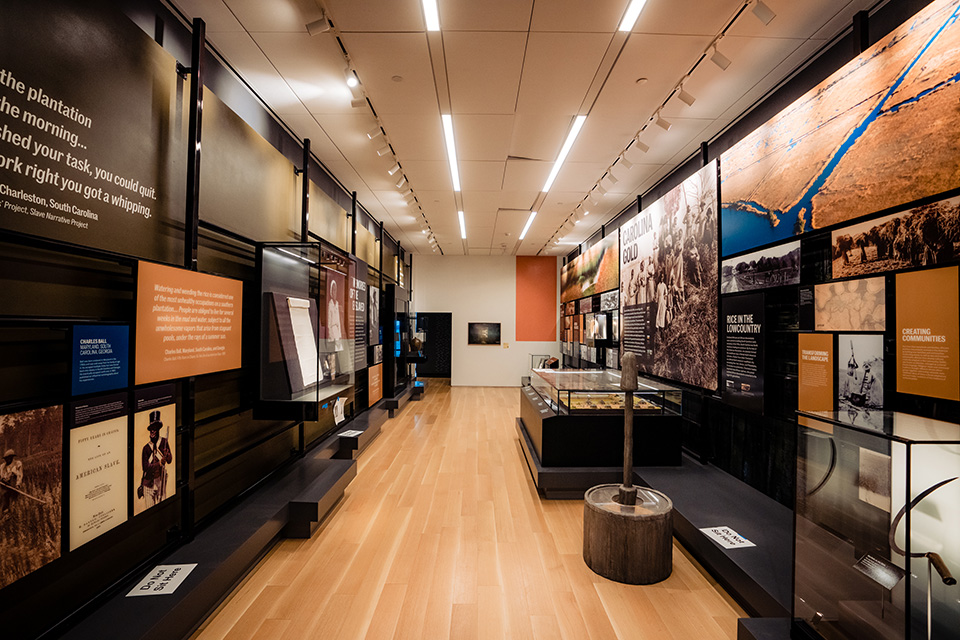 An exhibit at the new International African American Museum.
An exhibit at the new International African American Museum.
Dr. Tonya M. Matthews, the President and Chief Executive Officer of IAAM, underscores the profound importance of storytelling for museums, emphasizing the unique and powerful significance of African Americans having the opportunity to tell their own stories in an African American History Museum. Historically, this perspective has often been underrepresented in museums. Dr. Matthews also expresses her enthusiasm for the museum’s innovative use of technology, which has become an integral aspect of IAAM’s identity, in activating and enhancing these narratives.
Malika Pryor, the Chief Learning and Engagement Officer at IAAM, highlights the museum’s commitment to sharing its mission beyond its physical boundaries. As a new museum, IAAM has wholeheartedly embraced technology as a means of communication, with the aim of enriching and expanding the narrative, making it more tangible and vivid for visitors.
Technology plays a central and transformative role in the IAAM visitor experience. Pryor points to the “Transatlantic Experience” as a pivotal moment for visitors, serving as a grounding point. In this section, eight large, six-foot-wide-by-seven-foot-tall Sony Crystal LED displays create an immersive visual and auditory encounter, providing visitors with a deep understanding of the journey they are about to embark on within the other exhibitions and installations.
Dr. Matthews further elaborates on the impact of these displays when visitors first enter the museum. She describes how the eight panels, functioning as a guiding hallway in the Transatlantic Experiences gallery, envelop visitors with still and moving visual images, complemented by music. These panels lead visitors into the Atlantic World’s Gallery, which features one of the largest screens found inside a museum. This colossal screen immerses visitors in a multisensory experience of visuals and sounds. Dr. Matthews expresses her profound appreciation for this gallery, which intentionally weaves together artifacts and stories from across the African diaspora, offering a rich and comprehensive perspective on history.
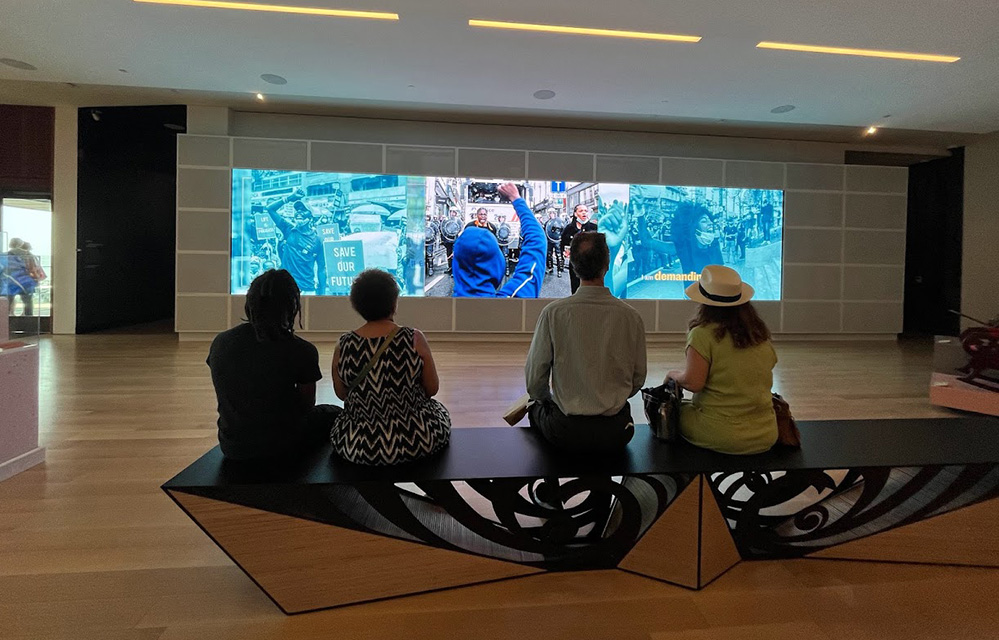 Atlantic World’s Gallery.
Atlantic World’s Gallery.
In the heart of the Atlantic World’s Gallery, a colossal Sony Crystal LED display takes center stage, spanning an impressive 32 feet by 7 feet with a remarkable resolution of 7,680 by 1,620. Positioned to overlook the breathtaking expanse of the Atlantic Ocean and Gadsden’s Wharf—the very historical port of entry for enslaved individuals—this monumental screen fulfills a profound purpose. It reshapes the site’s intricate historical associations, transforming it into a hub of empowerment, education, dialogue, and enlightenment. Dr. Matthews aptly encapsulates this transformation, noting that the potency of this location goes hand in hand with the power of technological activation.
Bobby Teachey II, the Project Manager who collaborated with the Solomon Group in the installation and setup of the AV equipment, including the monumental Crystal LED displays, shares his awe at the technology’s impact. He marvels at the intricate design of the modular cabinets housing smaller LED modules and the mesmerizing manner in which the entire setup seamlessly comes to life when content is presented on the displays. The sheer scale of the screen in the Atlantic World’s Gallery, combined with the sharpness and precision of the graphics, establishes a unique and profound connection for visitors. The vibrant colors and nuanced details, down to the depiction of sweat glistening on someone’s brow, convey a wealth of information and evoke powerful imagery, captivating visitors and encouraging them to spend extended periods in front of the display, absorbing the myriad narratives.
Beyond the visual presentations, the technology goes a step further by showcasing older photographs, videos, or re-enactments, serving as a bridge that breathes life into the artifacts on display. This transformative approach enables visitors to engage with history on a deeper level and fosters a more profound connection with the past, truly enhancing the museum experience.
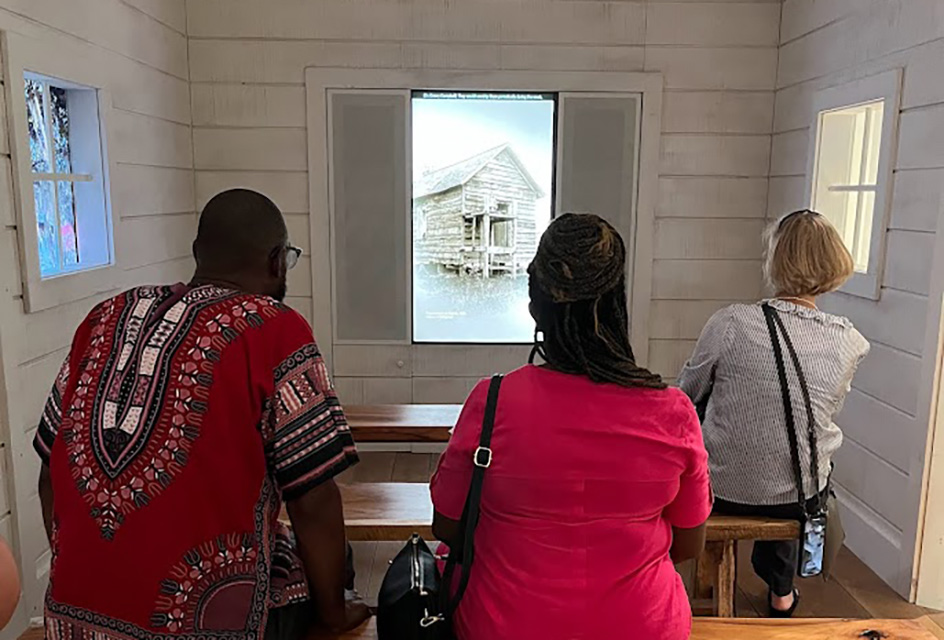 High-definition screens are used within the Praise House
High-definition screens are used within the Praise House
Teachey also highlights the pivotal role played by the more than two dozen 4K HDR professional BRAVIA displays, ranging in size from fifty-five inches to eighty-five inches, prominently featured throughout the museum. These displays serve as digital signage and significantly enhance the exhibition areas, including their use in the replica Praise House—a sacred place of worship for enslaved individuals.
Teachey notes, “The manner in which these high-definition screens are integrated into the Praise House is profoundly impactful. While you watch a video on them, you’re situated within a faithful replica of an ancient and solemn building, and the technology conveys a sense of reverence and purpose.”
This synergy between technology and history allows visitors to be transported back in time, creating a transformative experience that connects individuals to these powerful narratives.
Furthermore, the museum extensively utilizes Sony’s projectors, lenses, and wireless audio solutions across its space. Projectors play an instrumental role in screening content, supporting wall-mapped displays, and sharing footage in rotating exhibits and screening rooms. They also play a crucial role in the IAAM’s Center for Family History, a vital space dedicated to genealogy research and the exploration of individuals’ familial backgrounds. This comprehensive use of Sony’s technology enriches the visitor experience and fosters a deeper understanding of their personal histories and ancestral roots.
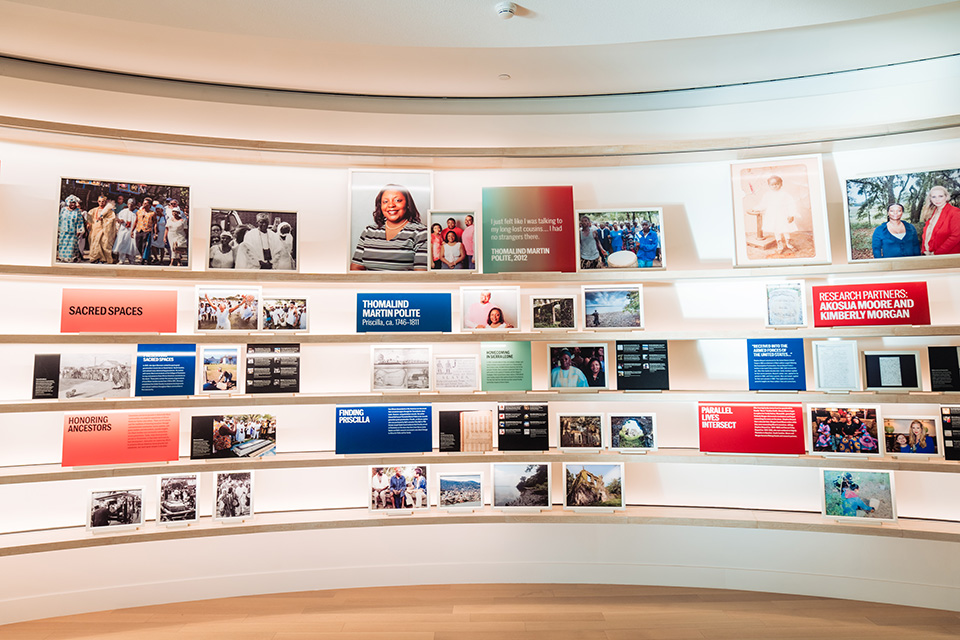 An IAAM exhibit.
An IAAM exhibit.
Dr. Matthews also underscores the pivotal role of technology in extending the reach of IAAM beyond the physical confines of their facility. She points out, “We introduced virtual exhibitions even before our physical doors opened, allowing our membership and interest to flourish on a national and global scale. Technology serves as the bridge for those who may not have the opportunity to physically visit our museum, as they can access these exhibitions virtually.”
She emphasizes that technology enables IAAM to connect with an increasingly tech-savvy audience. Dr. Matthews notes, “Digital natives have high expectations for technology; they expect it to be more than just passive. They anticipate technology to be a tool for engagement, a means to participate in a story, to generate narratives, and to contribute to ongoing stories.”
Being a history museum that leverages technology, IAAM is uniquely positioned to fulfill this role. It actively engages, shares, captures, receives, and builds upon stories, aligning itself with the desires and expectations of a digitally native audience. This dynamic interaction creates a more immersive and participatory experience, bridging the gap between the past and the present and ensuring that the museum remains a vibrant and relevant institution in the digital age.
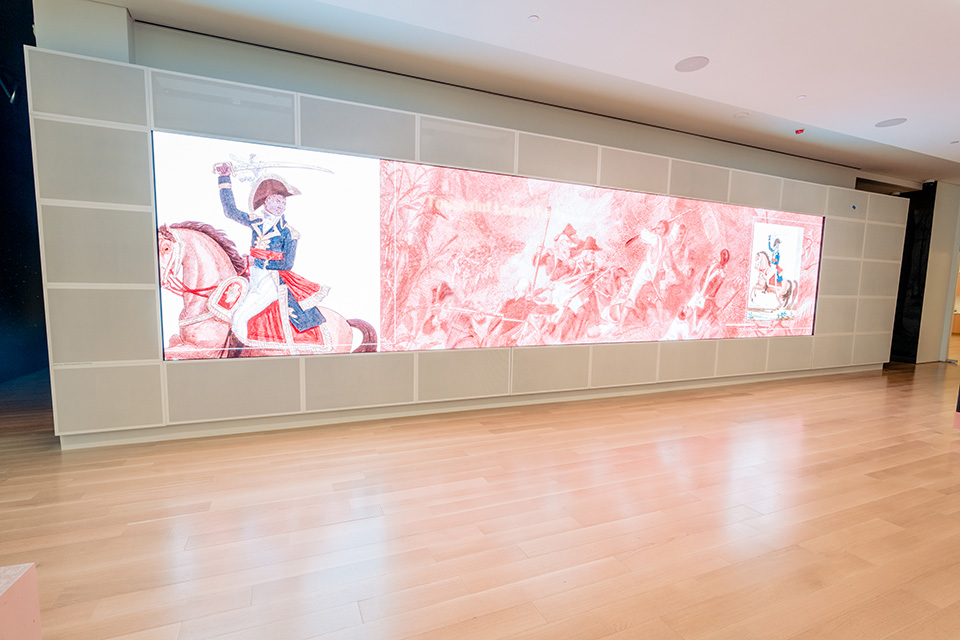 Sony projectors Projectors help support wall-mapped content.
Sony projectors Projectors help support wall-mapped content.
Sony’s support of the museum, facilitated through the company’s Global Social Justice Fund, is a testament to the significant role it plays, as recognized by the IAAM’s personnel.
Dr. Matthews emphasizes the critical importance of such corporate partnerships for museums and non-profit organizations. She underscores the mission of providing access and extending their reach beyond what the local community alone can sustain. She lauds corporate partners who are not only committed but also willing to confront and eloquently narrate the challenging aspects of history. It is paramount to understand that the motivation behind sharing these stories and learning this history is not confined to the past; it profoundly influences the present and future.
Teachey further emphasizes the substantial impact of Sony’s contribution, both in terms of donated technology and expertise. This generous support has been instrumental in bringing the museum’s vision to life.
Karen Kelso, the Vice President of Corporate Social Responsibility and Social Impact at Sony Corporation of America, aptly articulates Sony’s unwavering commitment to social justice and diversity. The company proudly stands behind the International African American Museum’s mission to illuminate the vital history and narratives of the African American journey. This collaboration aims to educate and inspire millions of individuals, fostering the creation of a more just, equitable, and inclusive society, aligning with Sony’s enduring commitment to these critical values and their dedication to advancing social justice.
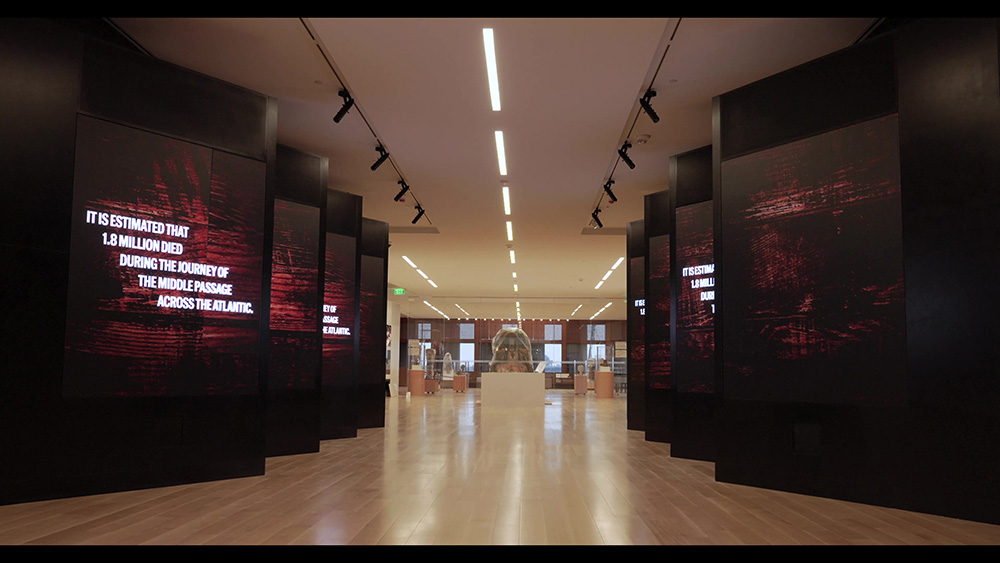 Sony 4K HDR BRAVIA technology in action at the IAAM.
Sony 4K HDR BRAVIA technology in action at the IAAM.
Overall, those at the IAAM are unanimous in their commitment to providing visitors with a means to connect with, engage with, and deepen their understanding of the past to help shape the future, with technology playing a pivotal role in sharing and bringing these stories to life.
Pryor sees the IAAM as more than just a linear narrative, stating, “We don’t view it as a simple beginning, middle, and end. Maybe we’re a part of someone’s starting point, maybe we help them navigate their middle. But we never want to be the conclusion.”
Dr. Matthews expresses her hope that visitors will depart the museum more curious than when they entered, emphasizing the role of the IAAM in sparking ongoing curiosity and exploration.
Similarly, Teachey’s aspiration is that visitors “leave with something they didn’t possess when they arrived.” He adds, “The most significant aspect is departing with conversations that contribute to connection, healing, and growth. The museum and its technology play an integral role in bringing all of these elements together for visitors.”
